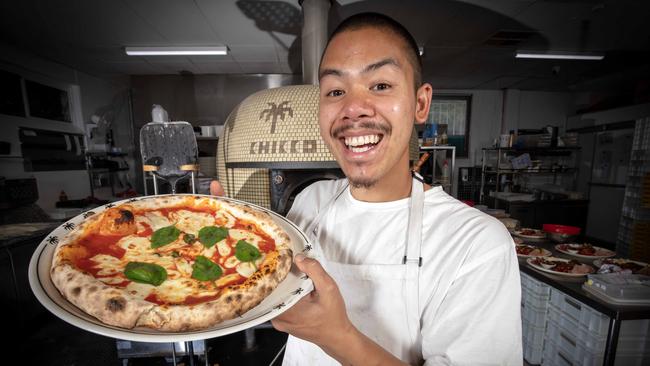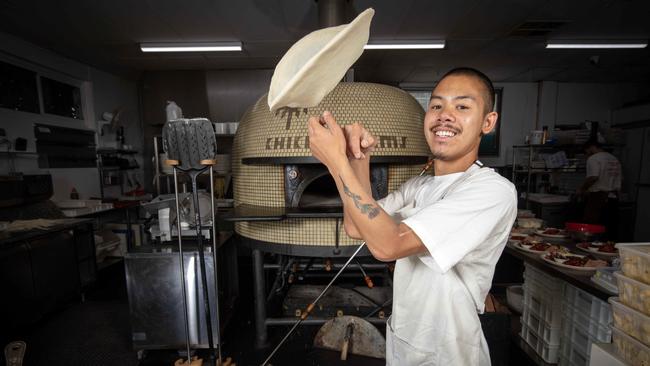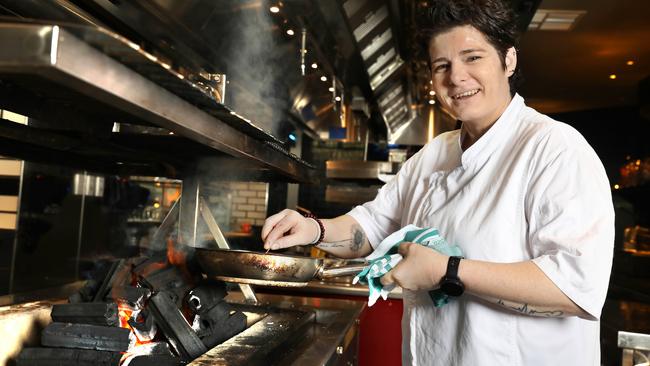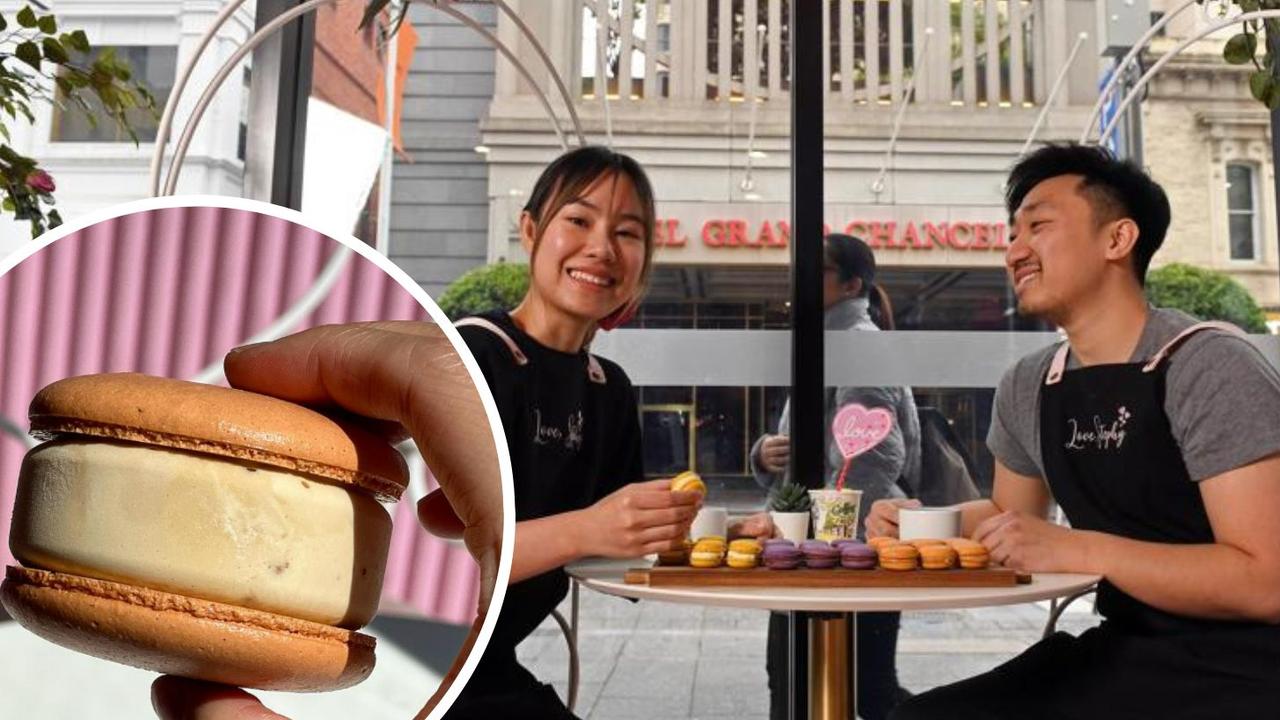Hospitality wages heat up in SA food industry’s post-covid boom
As restaurant owners struggle to fill jobs, chefs and managers can grab huge salaries. See some of the top SA jobs offers around.

Food & Wine
Don't miss out on the headlines from Food & Wine. Followed categories will be added to My News.
Six-figure salaries are on the table for South Australian hospitality workers, following a $20,000 spike for head chef and manager salaries resulting from post-pandemic demand.
Nationally, the salary spike sits closer to $45,000 – or up to $135,000 for head chefs – according to the industry’s peak body, and while restaurateurs agree the change is key to the sustainability of the industry, diners should expect to pay more for their meals.
Specific salaries vary, but a roundup of local restaurateurs confirmed increases in head chef salaries from around $75-$85,000 in 2019, to $110,000. It follows a mass exodus of hospitality staff during the pandemic, with the industry facing a shortfall of 7000 workers.
A number of top SA restaurants are currently advertising for head chef and managerial roles, with opportunities for training and development.
Among them is delicious.100 top 5 restaurant Press Food and Wine, which is on the hunt for an assistant manager.
Meira Harel, general manager of hospitality group Another Kind, which includes Press, said those in leadership roles “very rightfully took the opportunity to finally ask for what they deserve”.
“Our industry as a whole has always lacked in the space of remuneration,” said Ms Harel, who has built her career across a number of hospitality venues in Melbourne and overseas.

“I think we’re looking at a $20,000 difference in all leadership positions: head chef; restaurant managers. And $20,000 is a lot of money.
“The spike has been quite huge, very quickly, so for many businesses there has been a huge struggle.”
With regards to the assistant manager job at Press, she said the pay would “depend on the individual who comes through the door, but when the right person comes they will will get what they should get”.
Mike and Trinh Richards, who own popular Aldinga restaurant The Little Rickshaw, are offering up to $110,000 for a new head chef – a role that until now has been filled solely by Trinh.
“In 2019 that role would have been more like $85,000; now to attract talent it needs to be $100-$110,” Mr Richards said. “We have to also layer that with asking people to work reasonable hours and have reasonable time for family – all the things that are combined with what a normal job would be.
“If that doesn’t happen, how are we going to attract young people to come and work in hospitality?”
Mr Richards said the wage increases would inevitably flow on to menu prices, as restaurateurs already grapple with rising food costs.
“Maybe everybody needs to realise that if you want to eat, it’s going to cost a bit more because chefs need to get paid what they’re worth,” he said.
“If your plumber is on $100,000 a year, then your chef should be on $100,000 as well, because they’re both trades; they’re both hard; they’re both required.”
Peter de Marco, who owns such restaurants as Chicco Palms in Brooklyn Park and Chicken & Pig in Adelaide, agreed wage increases – while deserved – were difficult to absorb.
“Wages years ago used to sit around 30-35 per cent (of turnover), now we’re sitting 40-45 per cent,” he said. “We haven’t been able to increase our prices to keep up with inflation, because of how competitive it’s been and how damaging it’s been the past couple of years.
“Pizzas should really be sitting at around $35, but but we can’t charge those kinds of prices because noone’s going to pay for it.”
Restaurant and Catering Australia chief executive Suresh Manickam said chef roles prior to the start of the pandemic with a salary around $90,000 were now available for $135,000.
“The recent trends that have been observed with chefs and restaurant managers earning substantial salaries and sign-on bonuses demonstrate the lucrative opportunities for those in the industry,” Mr Manickam said.
“However, customers and patrons in Australia must understand that with rising wage costs, that this will be reflected in higher menu prices which should be normalised in our nation.”
Ms Harel agreed it was an opportune time to enter the industry.
“It’s important to really assess where you’re going to work – make sure you ask the right questions when it comes to hours of work, so you make sure you have balance; ask about training; about ethos and the philosophy of who you work for … if you ask the right questions there are quite a few great operators out there,” she said.
“The opportunities and the places you can get to are endless.”

Sky flyer in Kel’s kitchen
By Rebecca Whitfield-Baker
Skycity Adelaide’s first female head chef doesn’t seek the limelight – preferring her work to do the talking – but won’t shy away from her place as a role model in a male-dominated industry, either.
Kel Delaney has worked around the globe and is now head chef at Sean’s Kitchen, determined to play her part in continuing to help shift “kitchen culture”.
“I don’t like egos, I don’t chase recognition or praise … I put my head down, work hard, and focus on achieving what I’ve set out to do,” she said.
“I would be lying if I said it had been easy … at times it (has been) mentally exhausting,” she said.

“Some men still don’t want to be led by a woman, so that can be challenging – but as far as I’m concerned, that’s their problem and not mine.
“It’s (now) great to play a part in a larger, hospitality-driven organisation like SkyCity … I would like to think that some at Sean’s Kitchen would see me as a role-model, especially women.”
The trailblazing chef said while things are changing, women remain under-represented in her chosen industry.
“It’s hard to believe … we’re still a long way from seeing female chefs represented equally in kitchens, especially in prominent roles,” said Delaney.
“(But) it’s getting easier now as the culture in kitchens is evolving … (while) women are still outnumbered by men as chefs, I’m confident the number of female chefs will grow.
Australia chief operating officer David Christian said his company, which has about 1400 staff in SA, was proud to have established an “Inclusion Council” made up of several employee resource groups including women.
“Diversity and belonging are increasingly important subjects – individuals want to be included and accepted,” Mr Christian said.
“The Women’s Voice council focuses on issues for women in the workplace and makes representations to the council on how to deliver better outcomes.
Mr Christian said 43 per cent of SkyCity’s workforce were female.
“The women in our workforce are fundamental to our success,” he said.“SkyCity has signed on to the 40:40:20 ratio (40 per cent men, 40 per cent women, 20 per cent of any gender), which is about aiming for diversity of gender in workplace leadership, be it senior leadership teams or on the board … a lot of progress has been made over recent years, but the journey continues.”
SkyCity is readying to host its third The Advertiser, Sunday Mail and SkyCity Woman of the Year Awards, at a gala event on Monday, March 6.
“These awards are an outstanding opportunity to bring their stories to the forefront, to celebrate their successes and recognise their contributions to the advancement of gender equality,” Mr Christian said.





